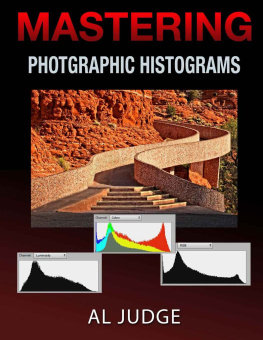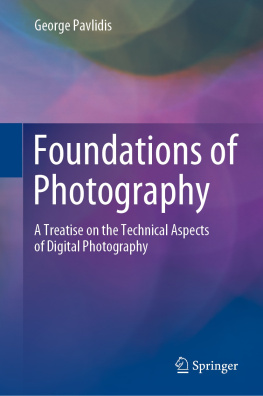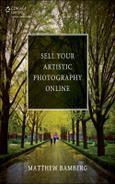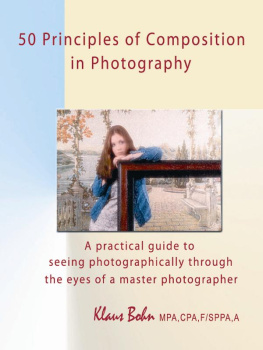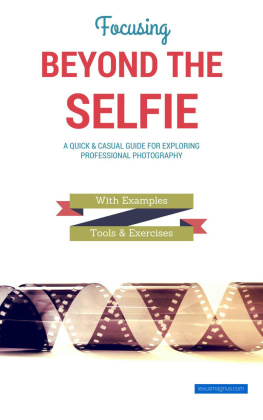\nFollowing his successful first book, Mastering Landscape Photography, Briot goes beyond the conventional rules of composition and takes on a fresh, new approach to teaching the art of photography. Based upon his personal experiences as an artist, teacher, and photographer, he opens new doors to the reader-doors leading to new ways of seeing and composing images.
\nTopics include:\n- How to compose with color, with black and white, and with light\n- Why you need to consider your audience while composing a photograph\n- Recreate the emotions you felt when you captured your photographs\n- How the elements of color-hue, contrast, and saturation-work in your images\n- How to control the elements that have a visual effect in your photographs\n- How to draw upon your personal way of seeing and then share your vision\n- How to diagnose image maladies and apply the proper remedies\n- How to define a color palette for a specific photograph\n- How to use compositional elements to develop a personal style
\nForweword by Tony Sweet" name="description"/>
Mastering Photographic Composition, Creativity, and Personal Style
Alain Briot
Copyright 2010
Mastering Photographic Composition, Creativity, and Personal Style by Alain Briot (www.beautiful-landscape.com)
Editor: Gerhard Rossbach
Copyeditor: Tonya Crandall
Production Editor: Joan Dixon
Proof Reader: Sarah Castellanos
Layout and Type: Almute Kraus, www.exclam.de
Cover design: Helmut Kraus, www.exclam.de
Cover photos: Alain Briot
Printer: Tara TPS Co., Ltd. through Four Colour Print Group
1st Edition (2nd Printing, January 2010)
Rocky Nook, Inc.
www.rockynook.com
Library of Congress Cataloging-in-Publication Data
Briot, Alain.
Mastering photographic composition, creativity, and personal style / Alain Briot. -
1st ed.
p. cm.
Includes bibliographical references.
ISBN 978-1-933952-22-2 (alk. paper)
1. Composition (Photography) I. Title.
TR179.B75 2009
771--dc22
2009003899
Distributed by OReilly Media
1005 Gravenstein Highway North
Sebastapool, CA 95472
All product names and services identified throughout this book are trademarks or registered trademarks of their respective companies. They are used throughout this book in editorial fashion only. No such uses, or the use of any trade name, are intended to convey endorsement or other affiliation with the book. No part of the material protected by this copyright notice may be reproduced or utilized in any form, electronic or mechanical, including photocopying, recording, or by any information storage and retrieval system, without written permission of the copyright owner. While reasonable care has been exercised in the preparation of this book, the publisher and authors assume no responsibility for errors or omissions, or for damages resulting from the use of the information contained herein.
This book is printed on acid-free paper.
Foreword
After a decade of leapfrogging technological advances and increasingly expensive high-end digital cameras, we have reached a plateau of sorts. Of course, there will continue to be advances in digital cameras, but the large leaps will be replaced with finer and more precise upgrades. Professional quality DSLRs can produce top quality files for any use, from stock images to fine art prints. But, just having the right equipment and software does not an artist make. Many photographers are great at getting compelling imagery and are marginal at software optimization. Conversely, some average photographers are practically software gurus, relying on their software expertise to create and output outstanding final images. I know only a handful of photographers who are as equally skilled at making great images as they are in bringing the image to fruition through software expertise. Alain Briot is a masterful landscape photographer as well as an expert in using Photoshop to optimize his fine art prints. Alain lives in the moment, creating consistently compelling landscape imagery. He also has an astronomers knowledge of the skies, a mathematicians ability to determine where and when the sun/moon will appear based on sophisticated calculation tables, a graphic artists computer/software/design skills, and an artists detailed eye for composition and color: a rare combination indeed.
The care and expertise applied to every aspect of Alains workfrom planning for the picture, to the final software optimization, and to the final printis apparent upon viewing his work. Every image is bold, compelling, simple, capturing a moment, and perfectly optimized.
Teaching with Alain made me aware of his humility and generosity in sharing knowledge with students. This book is an extension of that propensity for sharing. Like all of you, I look forward to delving into the wealth of information that is contained herein.
Tony Sweet
June 2009
Preface
When subject matter is forced to fit into preconceived patterns, there can be no freshness of vision. Following rules of composition can only lead to a tedious repetition of pictorial cliches.
E DWARD W ESTON
This book is about composition as I see it and as I practice it when I create my photographs. It is not about what I call the traditional approach to composition. Instead, it is about composition as I use it in my work; about what I call a new approach to composition. In this sense this book is about how I compose my images.
If you want to learn how I compose my images, then this book is for you. My goal when writing it was that it would open doors to new ways of seeing and composing images, doors that other books have not opened.
This book does not reiterate many of the compositional rules presented in books that approach composition from a more traditional perspective. I see no need to repeat what has already been said. Instead, I see a need to say what has not been said; a need to present a new approach to composition. In doing so, I see my purpose as enlarging the field of photographic composition to include subjects that have not, traditionally, been associated with composition. These subjects include how to compose images with color, with black and white, and with light; how to consider your future audience while creating a photograph; taking your color palette into account, and the nuances of grays you want to use; doing all this, and more, both while capturing a photograph in the field and while processing your photographs in the studio.
In this book I cover taking notes in the field about the colors of the elements in your image, as well as the contrast, the light, and all the other visual elements so that you can later draw on your memory to recreate the emotions you experienced while in the field. Also covered are how color works and how the three variables of colorsaturation, hue, and lightnessinteract so that you can control the colors in your photographs as if you were a painter in control of your color palette rather than a photographer at the mercy of the camera. Finally, I explain how these elements of composition will help you develop a personal style. All in all, the subjects in this book include learning to control all the elements that have a visual effect in the photograph.
My approach to composition, while specifically addressing photography, comes from my study and practice of painting. In other words, my experience as a painter shapes my approach to photography and to composition. If this approach strikes a chord with you, and if learning to approach photographic composition with the freedom and knowledge of an artist appeals to you, then this book will be a delight. It is my sincerest hope that such is the case.
Composition is a vast subject. Unfortunately, this subject is too often narrowed down to what is referred to as the rules of composition. Certainly, rules are important. But to limit the entire subject of composition to a set of rules is to limit what composition is as a whole. These rules may also limit how photographers (both newcomers and experienced practitioners) perceive what the field of composition encompasses.


